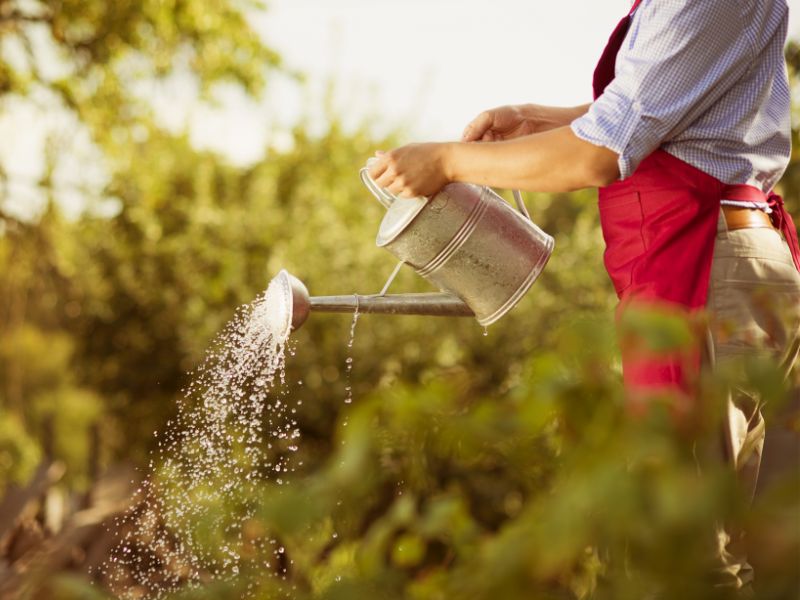Understanding Your Plant’s Water Needs
We’ve got to comprehend our plant’s water requirements, as not all houseplants have the same thirst level. Some need constant moisture, while others may prefer drier conditions. For example, succulents and cacti thrive in dry soil, while ferns and tropical plants might demand daily watering.
It’s critical to research the specific water needs of each plant species in our collection. Additionally, we should consider the pot size, type of soil, and the plant’s growth stage. Bigger pots retain more water, and fast-draining soils might require more frequent watering.
Similarly, a growing plant might need more water than a mature one. Understanding these factors helps us provide optimal care for our green friends and prevent issues like root rot or dehydration.

Tools for Effective Watering
While we can water our plants using a simple cup, using the right tools can greatly enhance our watering efficiency and precision. The most basic tool you’d need is a watering can. Look for one with a long spout for proper reach and a detachable head to control water flow.
To water plants that are high up or hanging, we’d recommend a pressure sprayer. They’re easy to use and can reach those hard-to-get spots. If you’re out of town, you can’t beat a good plant-watering globe or self-watering pot to keep your plants hydrated.
For checking how wet your soil is, moisture meters are a lifesaver. With the right tools, we can make sure our plants get exactly the water they need.
Techniques for Different Plant Types
Now that we’re equipped with the right tools, let’s dive into the specific watering techniques needed for different types of houseplants. Succulents and cacti prefer dry conditions, so they only need watering once the soil is completely dry:
- Overwatering can lead to root rot
- Which we definitely want to avoid
- On the flip side
- Ferns
- Other humidity-loving plants need their soil to stay consistently moist
However, this doesn’t mean waterlogged. Be mindful not to overwater; it’s a balance.
Lastly, flowering plants usually require more frequent watering, especially during their blooming period. Always remember, that the type of plant dictates the watering technique.

Mistakes to Avoid When Watering
Having discussed different watering techniques for various houseplants, it’s crucial we now address common mistakes to avoid when watering, ensuring our plants’ longevity and health. One common mistake is using the same amount of water for all plants. Each plant has unique needs, and we should adjust accordingly.
Another error is watering plants too frequently. Overwatering can lead to root rot, which is often fatal. We also need to be careful about the temperature of the water.
Cold water can shock the roots, while hot water can damage them. Lastly, watering the leaves instead of the soil can lead to fungal diseases.
Creating a Regular Watering Schedule
In light of these common mistakes, it’s essential we establish a regular watering schedule for our houseplants to ensure their optimal growth and health. We’ve got to consider each plant’s unique needs since some require daily watering, while others prefer a weekly schedule.
We’ll need to observe our plants carefully, noting any changes in their leaves or growth patterns that might indicate over or under-watering. It’s helpful to set reminders on our calendars or phones to keep us on track. Remember, consistency is key.
Let’s also adjust our watering schedules with the changing seasons. During warmer months, plants might need more water compared to the colder ones. Let’s cultivate a healthy watering routine to keep our indoor garden thriving.
We’ve journeyed through the ins and outs of plant watering
From understanding their needs to avoiding common mistakes. With the right tools and techniques, we can keep our leafy friends happy and healthy.
Remember, creating a regular watering schedule is the key. It’s a learning process, but with time, we’ll master the art of watering.
Let’s commit to giving our houseplants the care they deserve, and watch them thrive in return.






